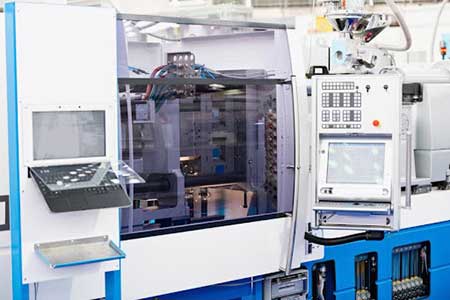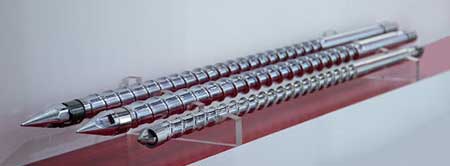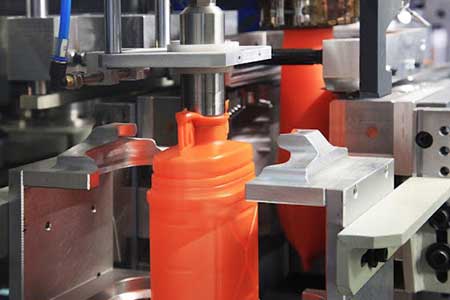About – Plastic Injection Molding
 Plastic injection molding is one of the most common forms of manufacturing. In any room you walk into, you can find several products that were made by injection mold. Chairs, toys, cases, disposable silverware, and keyboards are only a small portion of the vast amount of products that are made by injection mold.
Plastic injection molding is one of the most common forms of manufacturing. In any room you walk into, you can find several products that were made by injection mold. Chairs, toys, cases, disposable silverware, and keyboards are only a small portion of the vast amount of products that are made by injection mold.
How Injection Molding was Started
The technology for injection molding was invented to stop the hunting of African elephants.
In the 19th century, billiard balls were made using ivory from the tusks of elephants. This devastated the elephant population, and in order to deal with the excessive hunting, the billiards manufacturer Phella and Collender Company offered a $10,000.00 reward (About $3 million USD in today’s currency) for someone to come up with an alternative sustainable solution.
Necessity, the Mother of Invention
John Wesley Hyatt, a young inventor at the time, took up the challenge and through years of trial and error was able to make a celluloid material, one of the first synthetic plastics created. He then came up with a mold that was able to produce billiard balls using that material and helped drastically reduce poaching on elephants as a result. Today’s billiard balls are made from harder materials, but John Hyatt paved the way for one of the world’s most commonly used methods of manufacturing.
How Injection Molding Works
 Put simply, injection molding is when a material is heated, pushed into a mold, allowed to cool, and then ejected.
Put simply, injection molding is when a material is heated, pushed into a mold, allowed to cool, and then ejected.
There are 3 main pieces of machinery to any injection molding process, the injection unit, the mold, and the clamps that hold the mold.
The Injection Unit
Plastic pellets are fed through a hopper into the injection unit. Pellets for injection molds are typically a couple millimeters in diameter, and can be made in different colors using a special pigment material called “colorant”. Some recycled plastics can also be used as well.
The pellets are melted using heater bands that wrap around the injection unit. One of the early issues with injection molding was that the material in the center of the injection unit would remain cooler than the material closer to the heater bands.

As you might imagine, this led to issues when trying to push the material out into the mold. The solution to this issue is a reciprocating screw in the injection unite that serves several purposes. First, it keeps the pellets around the edge of the screw, as close as possible to the heater band and removes the cooler center.
The screw pushes the pellets along the injection unit, ensuring that by the time the pellets get to the front of the barrel of the injection unit they are entirely molten.
The Mold

The mold itself is a high precision machined part. They are often made of quality steel such as Chromium. Molds normally contain 2 halves, each of which has several components. It’s not uncommon for molds to take dozens of hours of just machining to be completed. That doesn’t include additional hours such as programming the CNC machines to run programs to cut the molds and other operations done to molds such as polishing. You can see how a mold is machined here. Molds can be expensive to make due to the level of time and precision it takes to get them made, but they offer a wide range of benefits including better unit costs that often outset the cost of the mold.
As the material gets pushed into the mold, air is also pushed into it as well. To give the air space to escape, extremely shallow vents are cut into the landing surface of the mold. These vents can be anywhere from 5-40 microns deep. (≈0.0001-0.0015”).
Releasing the Clamps & Ejection
The plastic, which at this point has the consistency of warm honey, is too viscous to flow through the vents. Coolant is pumped to help increase the speed the cooling process. As the material cools, the volume of the part is increased, creating a tremendous amount of suction. Once the part is cooled, the clamps will be released. The mold will slowly open to allow air to rush in to release the pressure of the suction, then the part is quickly ejected.
Revolutionized Manufacturing
Injection molding has revolutionized manufacturing for the world. With something like CNC machining, every side of a part has to be cut down to size and it can be a time consuming process. Injection molds allow for parts to be made almost instantly. This cuts down significantly on labor and machine time, making high volume parts more affordable and accessible for everyone.
If you’re looking to injection mold a product, contact us to see how you can get started.
Check out this video to see how LEGO uses injection molding to make one of the most legendary toys in history.

